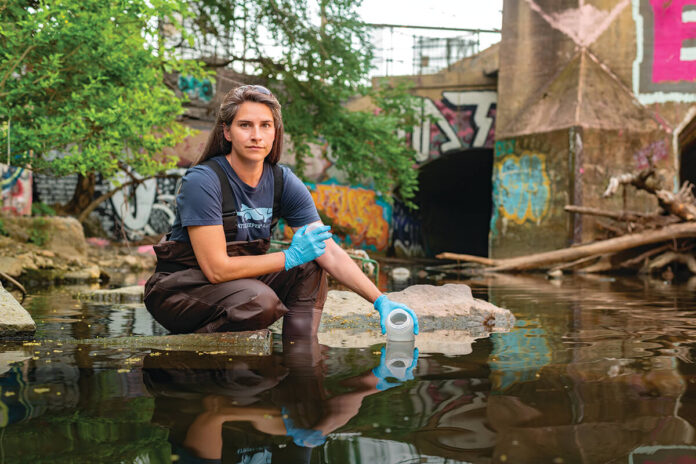The movement started in the 1960s along the Hudson River in New York, where fishermen noticed industrial contaminants killing fish they had long relied on as food. Years of activism led to legislation to restore the river—and to other groups uniting in the fight for clean water by forming the Waterkeeper Alliance in 1983.
As Baltimore Harbor waterkeeper, Volpitta harnesses skills learned as a biology and environmental science major at St. Mary’s College to test water at 49 spots across the city.
“My title is a misnomer because I monitor the Gwynns Falls, the Jones Falls—the entire tidal and nontidal tributaries that flow into the harbor and Patapsco River, and my jurisdiction includes the entire Back River watershed,” Volpitta says.
She posts test results on an interactive map on Blue Water Baltimore’s website, where the color red reveals a failure to meet state-mandated water quality standards and green signifies a pass.
At the time of this writing, clusters of red decorate the map along the Gwynns Falls and waters off of Canton Park and Locust Point, while greens garnish the upper Jones Falls and most of the Baltimore Harbor. Volpitta attributes the hard-earned greens to fewer sewage overflows upstream and an increased tree canopy and vegetative buffer along the streams, which mitigate polluted stormwater runoff.
Weather also influences water quality in urban environments, with rainfall often leading to higher bacteria readings throughout the watershed. But the reds and greens can change in a day, and no site id pollution-free.
“Our waterways are teeming with life, but they’re sick and need our help,” Volpitta says. “The problems are many: chlorides caused by over-salting roads, a legacy of factories using our waterways as dumping grounds, a crumbling sewage infrastructure, and lack of proper stormwater drainage—all of this spells trouble.”
Credit: Source link





























